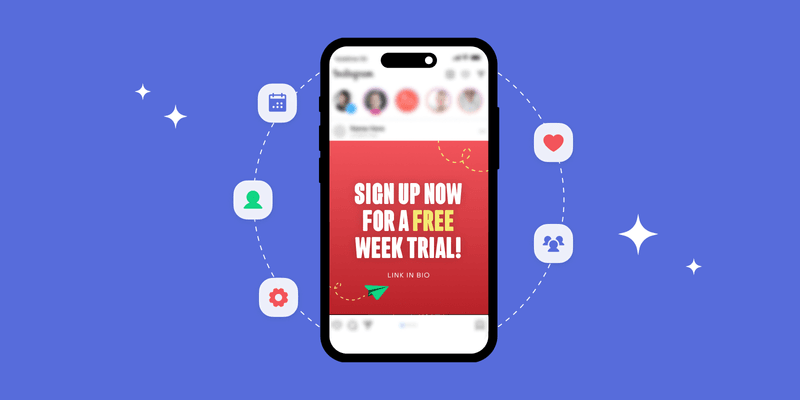Everyone tells you to “talk to your customers.” Yet so many subscription apps still flop, even when they’re drowning in user interviews. The secret isn’t just talking. It’s about how you listen and build what I call informed empathy.
The problem is that it’s easy to reduce “Speak to customers” down to “Ask your customers what benefit they’re looking for.”
The worst part is that it feels like you’re doing the right thing!
I mean, you’re not asking them what features to build. You’re focusing on the transformation. You’re kind of building a jobs-to-be-done statement… Right?
Yes. But no.
The reality is that customers will tell you about their pain points and desired outcomes if you ask them. And this is good. But there’s so much more they can tell you if you ask the right questions.
Depth conquers all
We don’t just want to learn about their pain point and desired outcome. We want to become the domain expert on our customers. We want to understand the context, motivations, feelings, drivers, nuances and lived experiences around those paint points and desired outcomes.
And the only way to do that is to ask deeper questions.
Questions that draw out:
- The language they use to describe their problem
- How that problem makes them feel
- Who that problem impacts beyond them
- Why that matters to them
- Their current context and when that problem is top of mind
- How they feel about their current context
- Why they feel that way
Doing this helps build what I like to call “informed empathy”.
What is informed empathy?
Informed empathy is the ability to understand and share another person’s feelings or experiences based not just on emotional intuition, but on factual knowledge about their context, background, and circumstances.
We don’t just want to know their feelings or desires, we want to know the experiences that led to those.
And unlike desired outcomes or pain points – there’s not a one size fits all answer. In fact, it’s not even close. Every user carries a unique mix of motivations and drivers. And whilst some will be shared across users, in every case, there’s variation.
Ultimately, our task is uncover these facts so that we can connect with users on a deeper level. This is the key to crafting winning ad creatives that resonate with the target audience.
User-generated content (UGC) scripts that feel more relatable, storyboards that are less shallow and creative concepts that are more thought out.
Drivers to probe around to build informed empathy
So how exactly do we build informed empathy?
One of the biggest breakthroughs I had was when I stopped turning up to user interviews with pre-written questions and instead started turning up with a list of drivers that I wanted to probe around.
I stopped chasing answers and started chasing context.
And these five drivers are the ones I find myself probing around most often to build informed empathy from user interviews:
1. Functional drivers
Up to this point, I’ve been pretty bullish about the fact that we don’t want to solely focus on functional drivers. However, they are a strong starting point!
By functional drivers I mean the tangible, real world outcomes a user is chasing, and the pain point they are running away from. It’s the before and after. The transformation. The specific job they are trying to fulfil. (whether big or small).
We want to identify this before (pain point) and after (desired outcome) so that we can begin to paint a clear picture for prospects:
Life without our product vs life with our product.
But once we identify that driver, we don’t stop. We probe.
- Why does that even matter?
- When did they start caring about this?
- What is the context around that functional driver
- What will be different when they achieve that outcome?
Because life with our product is about more than the functional job that it will accomplish.
For this reason, I like to use functional drivers as the entry point into the other drivers.
2. Emotional drivers
Whilst users are looking for functional outcomes, it’s emotions that drive purchase decisions. Very often the functional driver sits on top of an emotional driver. If we can get users to relive their purchase decision and the feelings that sealed the deal, we can focus on recreating those moments for a broader audience and become better storytellers.
Specifically I’m looking to dive into:
- How they feel about the pain point(s) that were are trying to solve with our product
- How they were feeling at the moment they decided to give our product a go
- Why they think they felt that way
- How they think they’ll feel when that pain point is relieved
Once we uncover their emotional triggers – relief, excitement, FOMO, we can proactively try and elicit those feelings through our ad creatives and marketing efforts. It’s about tapping into their emotions, not just their logic.
3. Contextual drivers
Next we have contextual drivers. These are typically the moments or environments that push users to turn to our app? But they could equally be the moments or environments that highlight the pain point or desired outcome in our user’s / prospect’s life.
Here’s a personal example!
I love tennis! I’m not that good. But I do love to play…
And I especially love to play when I’m watching Wimbledon on TV each Summer.
Personally I find these drivers helpful for generating a bucket of ideas for UGC scripts and creative concepts to test. It’s about understanding how your product does or might fit into their daily life.
Bonus tip: Try to dig into contextual drivers to see which emotional / functional drivers they are closely tied to. Is it that specific contexts evoke certain emotions? Or do they remind them about a specific outcome that is missing in their life?
4. Social drivers
Social drivers are often overlooked but can be incredibly powerful. And they often sit beneath functional or emotional drivers.
For example – I want to get in shape this summer, so that I don’t feel self conscious when I’m at the beach with my friends when we go on holiday.
There is a functional driver – Getting in shape.
There’s an emotional driver – Not feeling self conscious
There’s a contextual driver – Being at the beach
But there’s a social driver that underpins all of these – How my friends perceive me.
This is why it’s so important to keep digging, even when you think you’ve gotten your answer. We could stop at getting shape. But that’s not enough!
When probing for social drivers it can be useful to separate them into two types:
- The impact of other people on our user
- The impact of our user on other people
It’s an important distinction to make since social dynamics can be so complex.
5. Identity drivers
Finally we have identity drivers. We want to understand how the user perceives themselves and who they aspire to be. And going beyond this, we want to probe at how that impacts the decisions they make and have made in relation to our product and the pain point we are solving.
We’re looking to identify the personal values that the user believes are theirs intrinsically.
- Who are they trying to be?
- When they tell people they use this app, what does that say about them?
- What are their personal values? E.g. health, creativity, sustainability. And which of these are bolstered by subscribing to our app?
That way we can paint that picture for them with our product being the hero of the story.
We can lean on these personal narratives and value hooks when producing ad creatives. It’s about positioning our app as more than a functional piece of software but an integral part of them becoming the person they want to be and living the life they want to live.
Putting it into practice
“Talking to customers” alone won’t help you create winning ad creatives. But building informed empathy and layering creativity on top of core drivers is what brings breakthroughs on the acquisition side.
The next time you conduct a series of customer interviews, try this:
- Before the call: Try not preparing any more than 3 questions max. These questions should focus on getting users to open up around the drivers we want to unpack.
- During the call: Force yourself to probe for more details every time they answer a question. Even if you think you have your answer, keep asking why in different ways until you stop getting new insights.
- After the call: Thematise quotes by driver and look for any motivations that seem to be more central to the user’s story. Themes / situations / drivers they keep coming back to.
After this you’ll be in a great position to kick off a brainstorm with your creative strategy team and start coming up with stronger creative concepts and angles to test.

